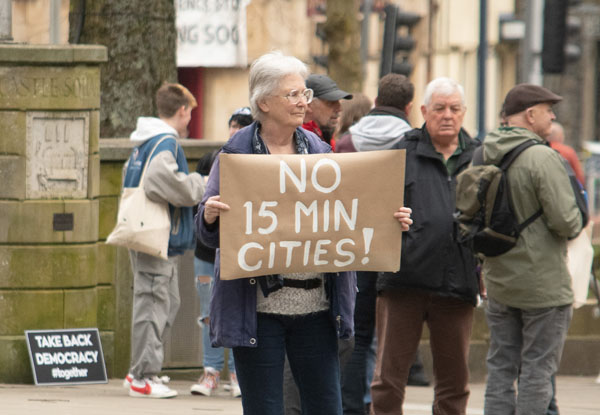2023 Year in Review: Shifts in focus, changes in climate
Highways editor Dominic Browne looks back at the biggest stories of 2023.
The year started as it meant to go on with a collection of stories in the January/February edition of Highways that set the tone. The Department for Transport (DfT) permanent secretary Dame Bernadette Kelly told MPs ‘the headroom for new projects in RIS3 (2025-2030) will be very limited’. This was the first signal of a shift away from new schemes that would be reiterated by National Highways’ chief executive Nick Harris throughout the year, as he stressed that even the well-funded national operator would try to focus on smaller projects and maintenance.
The change in tone was tempered by the naming of the Balfour Beatty as the first contractor to win a stake in the nation’s largest road building project – the £9bn Lower Thames Crossing from Kent and Essex – in a deal to build the roads north of the Thames.
By December, Balfour would be joined by Skanska, which will build the roads in Kent and Bouygues Travaux Publics – Murphy Joint Venture (BMJV), which will be responsible for the tunnelling. However, in a sign of the financial times, in March the Government announced that the project, which was due to begin in 2024-25, would be put back by two years.
At the local level, the UK Roads Leadership Group announced a review of the national code of practice for roads maintenance – Well-managed Highway Infrastructure. The emphasis of the consultation, which ended in February and is under consideration, was on new technology and software, and climate change.

A growing culture of sustainable innovation was boosted by the Live Labs 2 Decarbonising Local Roads project. Organised by ADEPT and sponsored to the tune of £30m by the DfT, seven schemes were granted funding, with each working on novel research and enterprise in low carbon highways services and management.
In March, Highways reported that Wales had gained international attention by setting a new bar for road building following an Independent Roads Panel review headed by Dr Lynn Sloman.
Road building will be allowed in Wales only where it supports modal shift, where it improves safety through small changes, helps Wales adapt to climate change or supports access to jobs, housing and centres of economic activity in a way that also supports modal shift.
April saw the annual ALARM report announce a record local roads maintenance backlog in England and Wales of £14bn, an increase of 11%. After punishing levels of inflation, the annual shortfall between current carriageway funding levels and what is needed to prevent further decline jumped to £1.3bn in 2022-23. In more positive news for roads, though much less so for rail, transport secretary Mark Harper pledged to invest an extra £8.3bn over the next 11 years in local highways following the termination of HS2’s phase 2. In return for the extra cash, local authorities will have to publish road resurfacing plans by March 2024 and report on progress thereafter on a quarterly basis.
In May’s Highways, the long running controversy over smart motorways came to a halt, or at least a hiatus, as prime minister Rishi Sunak scrapped plans for new all lane running schemes.
Projects not being taken forward included 11 paused smart motorway schemes from the current road investment strategy and three earmarked for construction in RIS 3.
Also in the spring, the Government published a draft revised national networks national policy statement (NNNPS), covering the strategic road and rail networks and strategic rail freight interchanges.
The DfT is still considering feedback on the draft. The plan to update the statement was first announced in the department’s 2021 decarbonisation strategy following a legal challenge on the grounds the existing NNNPS did not reflect the Government’s commitments to tackle climate change.

In the summer, Active Travel England was made a statutory consultee on all large-scale planning applications. A Manual for Smart Streets was also unveiled, offering new guidance to support local authorities with the latest intelligent transport systems and traffic technology, produced by the Transport Technology Forum and the Connected Places Catapult.
In July, Highways reported that figures from the transport sector were among those honoured in the King’s Birthday Honours. Hugh Gillies of Transport Scotland was made an OBE for his part in organising Queen Elizabeth’s cortege, while Anne Shaw, executive director of Transport for West Midlands was awarded an OBE for services to the Commonwealth Games last year.
October’s edition of Highways saw Wales once again achieve international recognition as it became the first country in the UK to reduce speed limits on restricted roads from 30mph to 20mph by default.
In November, we reported on a record turnout for the 20th Highways Awards. The awards has expanded year-on-year since the first event in 2004, and it now hosts some 700 guests and hands out trophies and highly commended awards in 17 categories.
The stand-out winners this year were employees of Durham CC – Katie Withers was named apprentice of the year and Robert Major won the Lifetime Achievement Award – and an innovative road safety scheme deploying ‘nudge’ theory intelligence. Transport Scotland’s Motorcycle Collision Reduction Initiative at Bends, Perceptual Rider Information for Maximising Expertise and Enjoyment (PRIME) project– a fancy way to describe two white vectors painted on the road before a turn – won Road Safety Scheme of the Year and the Judges’ Special Merit Award
A groundbreaking best-in-class carbon calculator from the Future Highways Research Group and ADEPT also made the news.
Over the course of the year, low traffic neighbourhoods, the concept of the 15-minute city and London’s implementation of an Ultra Low Emission Zone caused controversy and even protests. Central government responded with its Plan for Drivers, which signalled a range of ideas to restrict councils’ freedom to implement traffic reduction and enforcement schemes. It has been a year of challenges, differing fortunes and uncertain messaging in politics. However, throughout, the Tier One contractors, material suppliers and the supply chain continued to work to reduce carbon and modernise the industry.
The sector may be living in interesting times, but it is certainly producing innovation.